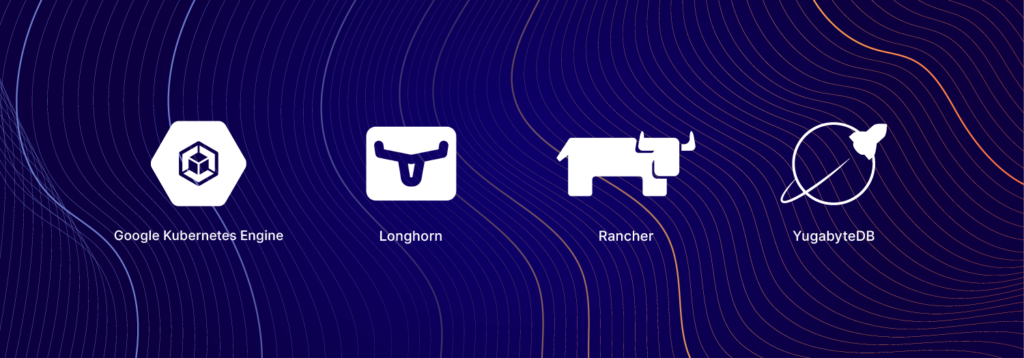Longhorn is cloud native distributed block storage for Kubernetes that is easy to deploy and upgrade, 100 percent open source, and persistent. Longhorn’s built-in incremental snapshot and backup features keep volume data safe, while its intuitive UI makes scheduling backups of persistent volumes easy to manage. Using Longhorn, you get maximum granularity and control, and can easily create a disaster recovery volume in another Kubernetes cluster and fail over to it in the event of an emergency.

Cloud Native Infrastructure Stack: Computing, deployment, administration, storage and database.
YugabyteDB is a cloud native, distributed SQL database that runs in Kubernetes environments, so it can interoperate with Longhorn and many other CNCF projects. If you’re not familiar with YugabyteDB, it is an open source, high-performance distributed SQL database built on a scalable and fault-tolerant design inspired by Google Spanner. Yugabyte’s SQL API (YSQL) is PostgreSQL wire compatible.
If you are an engineer looking for a way to easily start your application development on top of a 100 percent cloud native infrastructure, this article is for you. In this article, we’ll give you step-by-step instructions on how to deploy a completely cloud native infrastructure stack. The stack will consist of Google Kubernetes Engine, Rancher enterprise Kubernetes management tooling, Longhorn distributed block storage, and a YugabyteDB distributed SQL database.
#kubernetes #postgresql #postgres #distributed sql #distributed sql databases #yugabyte
